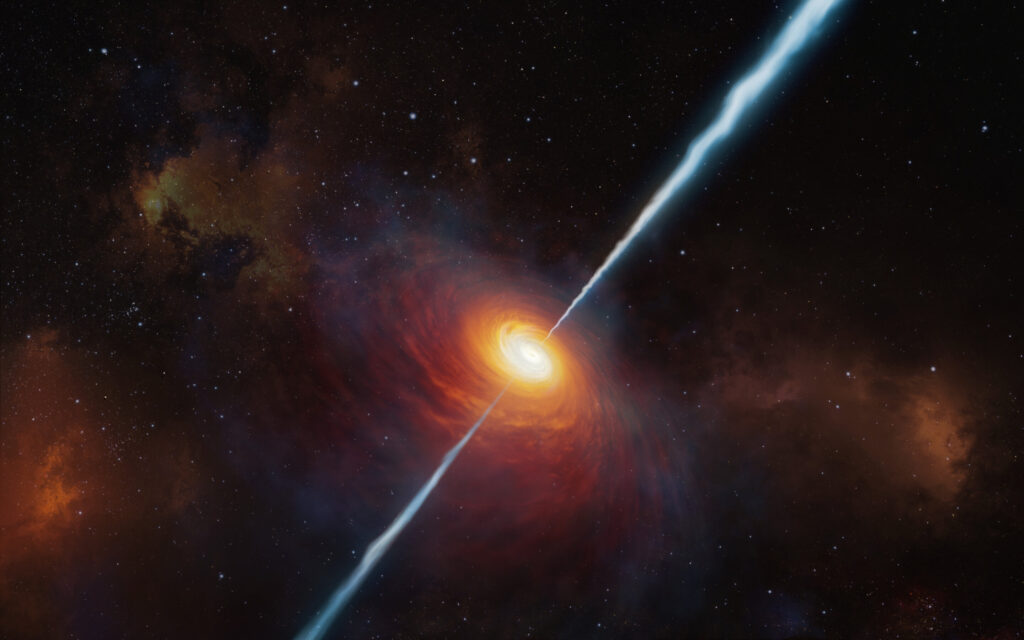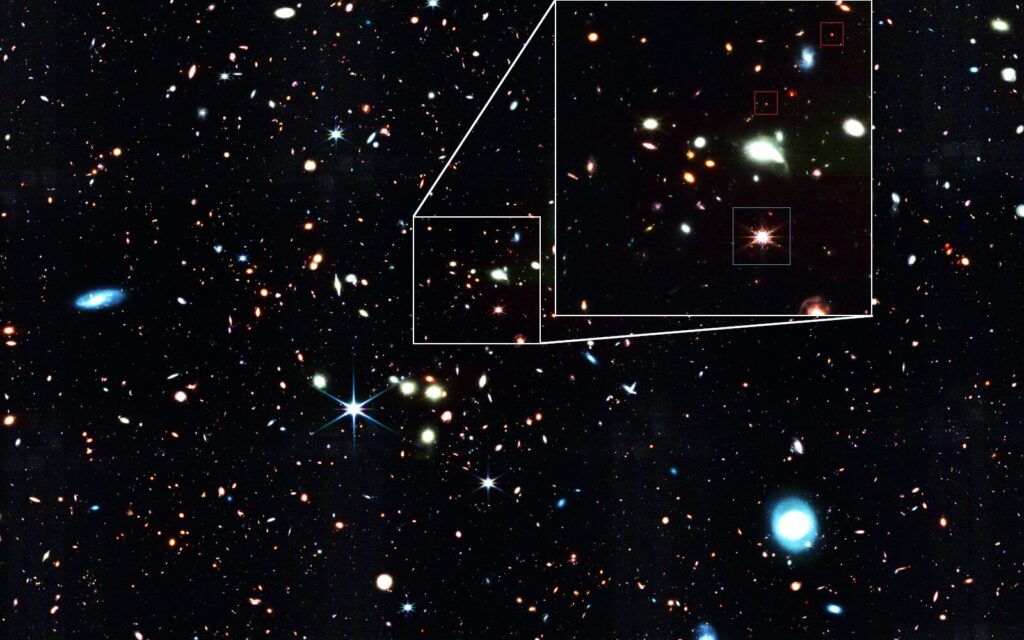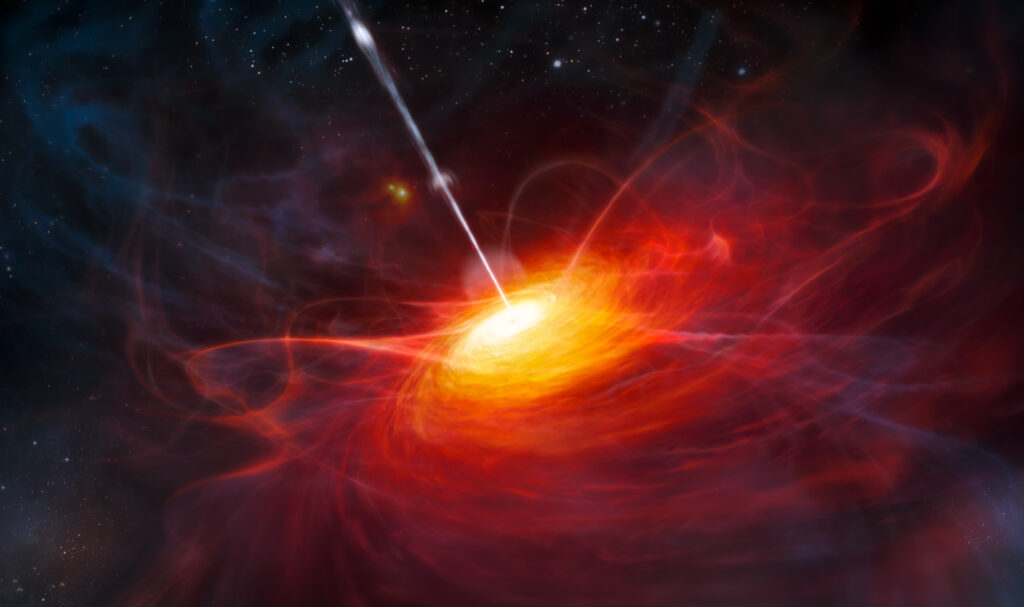Imagine peering into the distant universe, billions of years back in time. You stumble upon a celestial giant, a supermassive black hole, unleashing tremendous energy. But this isn’t your typical black hole. It’s surprisingly small, shrouded in dust, and unlike anything we’ve ever seen before. This, my friends, is the story of the “baby quasar,” a groundbreaking discovery by the James Webb Space Telescope (JWST) that’s shaking the very foundation of our understanding of the cosmos. Buckle up, space enthusiasts, because we’re about to embark on a thrilling journey to explore this revolutionary find and its profound implications for our cosmic perspective.
A Cosmic Nursery Uncovered

For decades, astronomers have been fascinated by quasars, brilliant beacons powered by supermassive black holes. These behemoths, millions to billions of times the mass of our Sun, reside at the hearts of galaxies, gobbling up matter and spewing out powerful jets of energy. But how do these monstrous black holes form? This is where the “baby quasar” discovery throws a cosmic curveball.
The recent JWST observations have revealed the existence of young supermassive black holes, much smaller than expected for their age.
A team of international researchers using JWST data identified two extremely distant objects, nicknamed “Baby Quasar 1” and “Baby Quasar 2.” These objects are estimated to be only a billion years old, yet harbor supermassive black holes weighing several billion times the Sun.
The traditional theory suggests that supermassive black holes grow gradually over time, devouring surrounding matter. However, these “baby quasars” seem to defy this logic, appearing much more developed than their young age suggests.
This unexpected discovery raises intriguing questions about the formation process of these celestial giants, prompting a paradigm shift in our understanding of how black holes evolve.
Unveiling the Mystery of the Shrouded Giants

The “baby quasars” aren’t just surprising in size; they’re also shrouded in a thick veil of dust. This dusty cloak significantly reddens their light, making them difficult to detect with traditional telescopes. Here’s where JWST’s infrared vision comes into play.
JWST’s ability to peer through dust allows us to observe these “baby quasars” for the first time, revealing their true nature.
JWST’s infrared capabilities unveil the hidden brilliance of these young quasars, allowing scientists to study their properties in unprecedented detail. The data suggests that the dust surrounding them is likely heated by the intense radiation from the black hole itself.
By observing these “baby quasars” through the dust, we can gain valuable insights into their early stages of development, including their feeding habits and the processes shaping their surroundings. This information sheds light on the crucial first steps in the life cycle of a supermassive black hole.
Unveiling the “baby quasars” from their dusty hiding places allows us to piece together the puzzle of black hole formation, offering a glimpse into a previously unseen chapter in the cosmic story.
A Glimpse into the Future: A New Era of Discovery

The “baby quasar” discovery is just the beginning of an exciting new chapter in our exploration of the universe. JWST’s capabilities, coupled with ongoing research, promise to unlock further secrets of these enigmatic objects.
The discovery of “baby quasars” opens up a new window to study the early universe and the formation of supermassive black holes.
Scientists plan to use JWST to observe more “baby quasars” and study their properties in greater detail. Additionally, they aim to combine JWST data with observations from other telescopes to build a comprehensive picture of their evolution.
By studying these young quasars, we can gain invaluable insights into the conditions of the early universe, including the density of matter and the formation of the first galaxies. This knowledge can help us refine our understanding of how the universe has evolved over billions of years.
The “baby quasar” discovery demonstrates the immense potential of JWST to revolutionize our understanding of the cosmos. As we continue to explore these celestial nurseries, we can expect even more groundbreaking discoveries that will reshape our cosmic perspective.
Conclusion
The discovery of “baby quasars” is a testament to the power of human ingenuity and technological advancements. JWST, a marvel of human engineering, has opened a new window into the universe, revealing hidden secrets and challenging our established knowledge. As we delve deeper into the mysteries of these young supermassive black holes, we embark on a thrilling journey of scientific exploration, rewriting the story of the cosmos one celestial discovery at a time. Thank you for joining us on this exciting voyage into the unknown!



















